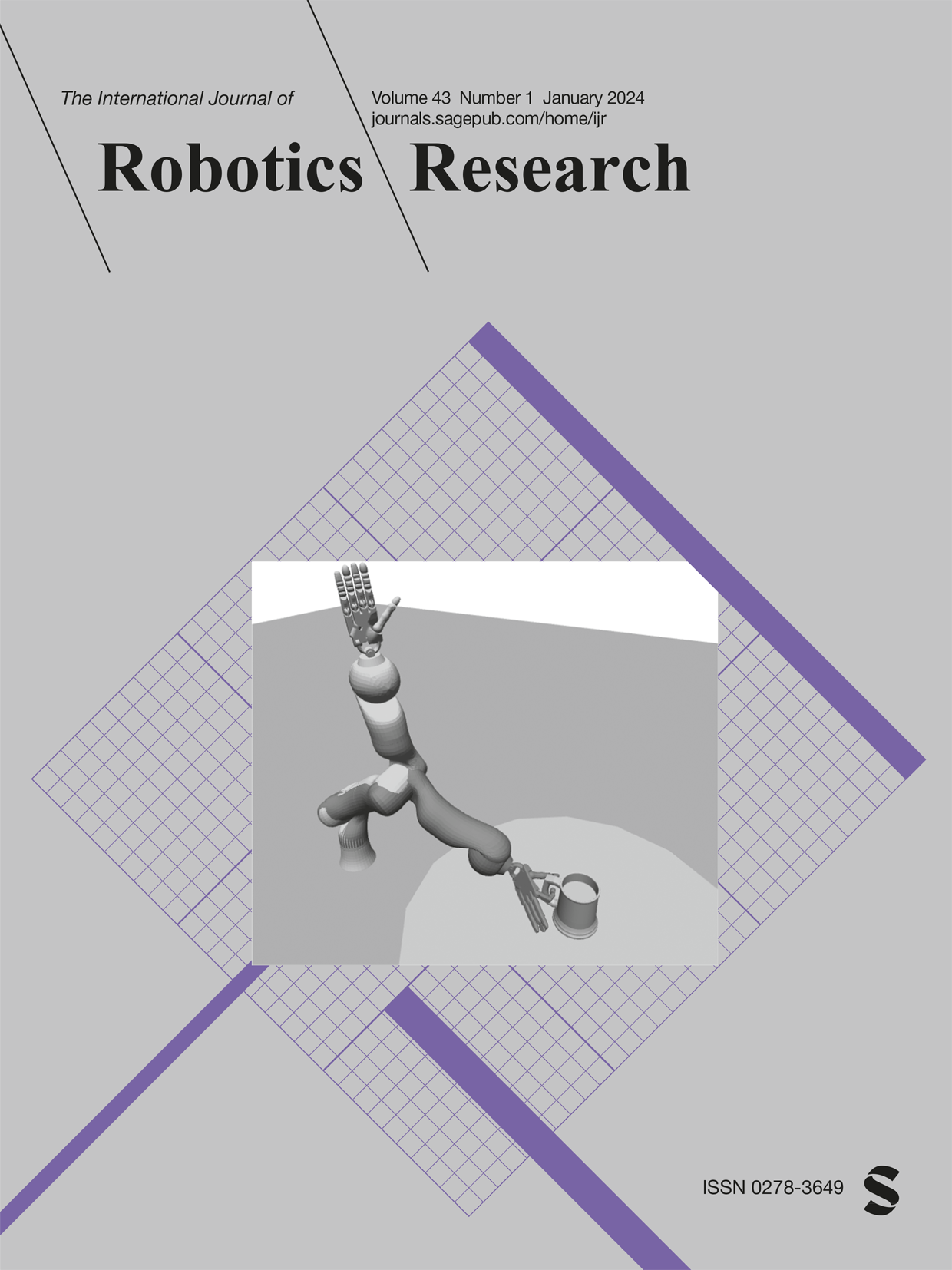Optimizing contact patterns for robot locomotion via geometric mechanics
IF 5
1区 计算机科学
Q1 ROBOTICS
引用次数: 1
Abstract
Contact planning is crucial to the locomotion performance of robots: to properly self-propel forward, it is not only important to determine the sequence of internal shape changes (e.g., body bending and limb shoulder joint oscillation) but also the sequence by which contact is made and broken between the mechanism and its environment. Prior work observed that properly coupling contact patterns and shape changes allows for computationally tractable gait design and efficient gait performance. The state of the art, however, made assumptions, albeit motivated by biological observation, as to how contact and shape changes can be coupled. In this paper, we extend the geometric mechanics (GM) framework to design contact patterns. Specifically, we introduce the concept of “contact space” to the GM framework. By establishing the connection between velocities in shape and position spaces, we can estimate the benefits of each contact pattern change and therefore optimize the sequence of contact patterns. In doing so, we can also analyze how a contact pattern sequence will respond to perturbations. We apply our framework to sidewinding robots and enable (1) effective locomotion direction control and (2) robust locomotion performance as the spatial resolution decreases. We also apply our framework to a hexapod robot with two back-bending joints and show that we can simplify existing hexapod gaits by properly reducing the number of contact state switches (during a gait cycle) without significant loss of locomotion speed. We test our designed gaits with robophysical experiments, and we obtain good agreement between theory and experiments.基于几何力学的机器人运动接触模式优化
接触规划对机器人的运动性能至关重要:为了正确地自我推进,不仅要确定内部形状变化的顺序(如身体弯曲和肢体肩关节振荡),而且要确定机构与环境之间建立和断开接触的顺序。先前的工作观察到,适当地耦合接触模式和形状变化允许计算可处理的步态设计和有效的步态性能。然而,尽管是出于生物学观察的动机,目前的技术水平还是做出了假设,即接触和形状变化是如何耦合的。在本文中,我们将几何力学(GM)框架扩展到设计接触模式。具体来说,我们在GM框架中引入了“接触空间”的概念。通过在形状和位置空间中建立速度之间的联系,我们可以估计每次接触模式变化的好处,从而优化接触模式的顺序。这样,我们还可以分析接触模式序列如何对扰动作出反应。我们将我们的框架应用于侧绕机器人,并实现(1)有效的运动方向控制和(2)在空间分辨率降低时的稳健运动性能。我们还将我们的框架应用于具有两个后弯关节的六足机器人,并表明我们可以通过适当减少接触状态开关的数量来简化现有的六足机器人步态(在步态周期内),而不会显著降低运动速度。通过机器人物理实验对所设计的步态进行了验证,理论与实验结果吻合较好。
本文章由计算机程序翻译,如有差异,请以英文原文为准。
求助全文
约1分钟内获得全文
求助全文
来源期刊
CiteScore
22.20
自引率
0.00%
发文量
34
审稿时长
6-12 weeks
期刊介绍:
The International Journal of Robotics Research (IJRR) has been a leading peer-reviewed publication in the field for over two decades. It holds the distinction of being the first scholarly journal dedicated to robotics research.
IJRR presents cutting-edge and thought-provoking original research papers, articles, and reviews that delve into groundbreaking trends, technical advancements, and theoretical developments in robotics. Renowned scholars and practitioners contribute to its content, offering their expertise and insights. This journal covers a wide range of topics, going beyond narrow technical advancements to encompass various aspects of robotics.
The primary aim of IJRR is to publish work that has lasting value for the scientific and technological advancement of the field. Only original, robust, and practical research that can serve as a foundation for further progress is considered for publication. The focus is on producing content that will remain valuable and relevant over time.
In summary, IJRR stands as a prestigious publication that drives innovation and knowledge in robotics research.

 求助内容:
求助内容: 应助结果提醒方式:
应助结果提醒方式:


